|
I came across a great Ted Talk given by David Epstein, an investigative reporter, who writes about the colliding worlds of sports, science and medicine. In a Ted Talk that he gave in 2014 in Vancouver, Canada, David shares the work of Ross Tucker, a Professor of Exercise Physiology at Free State University in South Africa. In his talk, he describes a demonstration that Ross conceived that compares the actual speed that both Jesse Owens and Usain Bolt ran in their world record performances in 1936 and in 2013. Tucker’s aim was to help dispel a myth that modern day athletes are far faster, stronger, and superior to athletes of the past (using track and field as a reference point). In 1936 Jesse Owens set a world record in the 100m by running it in 10.2 seconds. In 2013 Usain Bolt ran the 100m in 9.77 seconds. To drill home his point, Ross Tucker devised a make-believe race in which Jesse Owens and Usain Bolt ran against one another and in the race, beeps are used to identify exactly when each runner crosses the finish line. When you listen to this race at normal speed, the beeps sound at almost exactly the same time as the two cross the finish line. Despite the beeps being so close together, Ross Tucker was able to determine that Jesse Owens would have been about 14 feet behind Bolt which is actually quite a gap in regards to the 100m sprint. In modern day Olympic competitions, Owens wouldn’t even have qualified for the finals of the 100m. Although it seems as though Usain Bolt is a far superior sprinter than what Jesse Owens was, Tucker sets out to disqualify this judgement and does so by comparing the technology that was available to each runner at the time of their world record race. Consider this……. Jesse Owens had to use a garden trowel to dig out holes in the track in order to propel himself out of. As well, he ran the race on a cinder track which was a surface consisting of ash made from burnt wood. As Epstein explains in his Ted Talk, the cinder track stole vast amounts of energy from him as he sprinted toward the finish line. Tucker conducted a biomechanical analysis of the speed of Owens’ joints and determined that had Jesse run on the same track as Usain Bolt, using the same technology that Bolt had access to , he would’ve finished a mere step behind him not 14 feet. Obviously even by today’s standards Jesse Owens would be a world class sprinter, ranking right up there with the likes of Usain Bolt and other top Olympians. When looking at the Owens/Bolt story above, I would argue that the analogy stays the same in the examination of teaching. When filtered down to the bare essence of teaching, what separates the good from the great or the not good from the average? It is commonplace to assume at times that teachers who have an abundance of technology and resources available to them ultimately have a greater impact on those who they teach. I would argue that some of the technology being used nowadays is necessary for teaching, just as certain technologies have allowed modern day athletes like Bolt to own the world of sprinting. However, when considering what good teaching means, I would make a case that when we remove all the glitz, glam, bells and whistles that we sometimes tend to roll out in our practice, we are left with only our teacher selves. At this point, we must evaluate what is most important in making a difference to becoming the teachers that we want to be. Just as the timeless art of good sprinting hasn’t changed that much over the decades, neither have the factors related to our pursuit of mastery in teaching. I recently contacted a number of researcher friends of mine from around the world to ask them to define what they believe to be the keys to mastery in teaching and they all got back to me with varying perspectives on this question. At the heart of it though, there were definitely some commonalities. Having access to technology and an abundance of resources, without question, can help to better our teaching, but when we get right down to the bare essence of what good teaching means, it must begin with us. The keys to success in teaching are within our grasp if we always maintain the desire to learn and grow, to form positive relationships with our students (and colleagues), and continually work to define our purpose. If we were to look back in time at teaching over the years, examining what made great teachers excellent at what they do, I’m sure we would find the very same fundamentals and keys to success in place; a desire to learn and grow, the ability to form positive relationships, and a clarity of purpose. Layering in all the extras in our teaching is an essential part of our job, especially if these extras enhance student learning. However, we must not lose sight of the key fundamentals to success that lie at the very core of great teaching.
3 Comments
I think that you are going to enjoy reading this insightful guest reflection by University of Kentucky researcher/lecturer Aaron Beighle. To understand what my Good Teaching is L.I.F.E reflection series is all about, check out the picture below to see what each area represents. The reflections that my guests provide summarize their thoughts about their own teaching and the most important things that they have learned throughout their career. Aaron shares some honest thoughts about his own practice and some major lessons learned that he feels has shaped his journey in education. 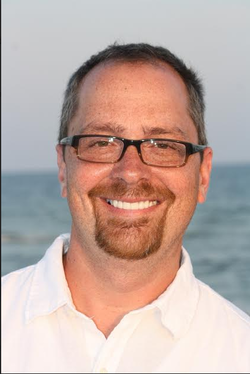 A Bit About Aaron Beighle Aaron Beighle holds a Masters degree in Exercise Physiology from Texas Christian University and Ph.D. from Arizona State University in Curriculum and Instruction – Physical Education. Prior to these degrees, Dr. Beighle worked in the fitness and recreation industry throughout the United States. Currently, he specializes in the areas of physical education and physical activity for youth. He is a faculty member in the Department of Kinesiology and Health Promotion at the University of Kentucky where he trains future physical educators and works to promote physical activity for youth. Dr. Beighle has consulted with school districts, recreation programs, and youth sport organizations across the country in their efforts to maximize physical activity experiences and promote youth to be physically active for a lifetime. This has included trainings for physical education faculty, after-school staff, early child care staff, and youth sport coaches, in addition to presentations to parents regarding the importance of physical activity. He is the author and co-author of 75+ research-based and practical articles pertaining to school-based physical activity promotion and physical education. In addition, he is a co-author on several national documents including the CDC’s Physical Education Curriculum Analysis Tool and NASPE’s original Comprehensive School Physical Activity Promotion: A position statement. Beighle is also a co-author of six books (Promoting Physical Activity and Health in the Classroom, Pedometer Power, Pedometer Power 2nd ed., Dynamic Physical Education for Elementary School Children 16e, 17e, 18e.). Most recently he has served on the National Physical Activity Plan Education Sector Committee and the Let’s Move ActiveSchools Physical Activity Leader Training and Train the Trainer Workshop. He can be followed on twitter @AaronBeighle @dynamicphysed and on Voxer at aaronbeighle. Aaron's Good Teaching is L.I.F.E Reflection There are amazing differences between our students in regards to the mindset that they bring with them into the classroom and other learning spaces within our schools. Carol Dweck, a well-known Stanford professor, and her team of researchers have taken an in-depth look at the differences between a growth and fixed mindset over the years and have determined that one of the biggest factors related to success in school is the ability of our students to demonstrate grit. Students who lean more toward having a growth mindset, without question, show greater levels of grit in their day-to-day learning. And it's this grit that can reveal itself in multiple ways as they learn in school. Although we understand the importance of grit, how often do we actually address it in the lessons and the units that we teach? In regards to physical education, grit and perseverance are big concepts that must be addressed whenever possible. Bearing this in mind, I wanted to put together a grit self-assessment and reflective tool that I hope other teachers can try out with their students. If you decide to use this grit self-assessment and reflection tool, it is imperative that you have a discussion with your students about what grit means. It would be best to roll this out at the beginning of a unit and let your students know that you are interested in addressing their levels of grit throughout the unit in an effort to understand more about the way that they learn in PE. As well, it would be highly beneficial to have the students set some type of goal to work on in the unit itself as one of the areas being self-assessed is the ability to stick with a goal. As you can see below, there are 6 different areas that the students must self-assess themselves in, as well there is room for a written reflection for each area. You may want to print this off on A3 sized paper to give the students more room to write their reflections. I have designed this grit self-assessment and reflection tool in a way that allows it to be used in any unit being taught in physical education. In fact, it can be used in any subject area as it's quite generic. If you'd like to use this assessment tool, I have included a PDF at the bottom of this blog post for you to download. They only thing that I ask is that you share the results with me including some examples of student work after the unit. I'd like your honest feedback on whether or not this was an effective tool in helping to address levels of grit shown with your students. Please stress with them that all you are looking for is complete honesty in regards to how they feel about their learning, so it is imperative that they self-assess themselves honestly and write reflections that are genuinely true. Hope you get some use out of this grit self-assessment and reflection tool.
As you start a new week, I want to pose a challenge that I think is quite meaningful in helping to revisit your purpose and to give you something worth thinking deeply about. My wife, Neila Steele, drew my attention earlier today to a Daniel Pink video "Two questions that can change your life". It's all about creating our personal mission statements that are just one sentence in length. In creating these mission statements, we need to ask ourselves two very important questions: As Pink states in the video, when we are trying to do too much, our mission statements can some times become muddled paragraphs instead of succinctly written sentences that sum up our exact purpose or what we strive to achieve. The interesting thing here is that the sentences should be written from a 'looking back at your life' type of perspective. In the 1960's, the first American woman to serve on congress in the US, Clare Booth Luce, went to speak with John F. Kennedy and said to him that 'A great man is a sentence." In the video, Daniel Pink provides examples of what these personal statements might look like: Could we extend upon upon Clare Booth Luce's 'A great man is a sentence' analogy and apply it to our work in education? Could we say instead, 'A great teacher is a sentence.'? If so, what would your one sentence be if you were to look back at your life's work and succinctly sum up what you had achieved? I've thought about this the last few hours, it's no easy task, but fun and challenging. Perhaps this would be mine: "He taught people how to truly take pride in who they are and what they can accomplish in life." Hopefully my personal statement applies to the teachers I work with through my consulting and the students that I have taught in the past. I challenge you to not only take the time to write your personal statement but to also post it in your personal space or work space and look at it every day. At the end of each day, I ask you to honestly reflect upon whether or not your actions that day allowed you to check the 'Yes' box for meeting your personal mission statement. There will no doubt be days that we check the 'No' box, but know that these days will be greatly outnumbered by 'Yes' checks when you one day look back on your teaching career. Check out Daniel Pink's video below and take on this challenge when you are ready. Good luck! There are prevalent misconceptions that we all hold about other people in our lives. Holding certain misconceptions is commonplace and unavoidable at times, it’s the nature of who we are and how we operate and by no means implies that we have malicious intentions against those who we may not completely understand in character and mind. I want to share with you quite a personal story, one that forced me to confront and deal with the fact that I had carried huge misconceptions about a very important person in my life, but once I was able to better understand the truth, it was too late to act upon it and let them know. However, as sad as this might seem, it was actually a deeply profound moment that brought with it a certain sense of peace and valuable insight that stays with me to this day. I believe that the lesson I learned from this experience has made me a better teacher as it’s allowed me to understand the importance of being aware that the truths that we feel are accurate about others may in fact be far from the actual truth. As educators, there is no greater place to apply this learning than to the students that we teach on a daily basis. Andrew Joseph Vasily I was named after my father. My dad was a unique kind of man who prided himself in hard work and figuring out how to get things done. He was a man of few words and often times would lock himself away in his home office working endlessly on the different architectural projects he was involved in. Although I tried to make sense of his paper and pencil designs when he wasn’t around, I had no idea what the multitude of numbers and different sketches actually meant but would still love looking at them. The most satisfying times I ever had with my father were throwing the football around and hitting golf balls on the range in silence with him. He’d offer me a tip and some advice from time to time, but other than that we would just carry on with things. As I grew older and matured, I began to form what I felt to be certain truths about my father. And although I had a relatively good relationship with him, I found it hard to understand him at times, especially after my sons, Eli and Tai, came into the world. I’m very close with my sister (also an educator), who is 7 years older than me, and together Carol and I would talk for hours trying to figure out why our father seemed so absent at times. We grappled with questions such as ‘Why wouldn’t he just pick up the phone and call to see how his grandkids are?' Together we formed certain conclusions that he was sad, lonely, and had no real interests. The introverted nature of my father’s character was difficult to understand and accept. Deep down we knew that he cared for and loved us. That wasn’t the issue, instead we found ourselves endlessly questioning why he wasn’t taking action in his life to find joy and happiness. Little did we know……. One of the things about living so far from Canada is the distance away from long time friends and family. Many international teachers have received that dreaded call or email to inform them of bad news from back home. Being so far away at times like this can be extremely daunting and overwhelming when things like this happen. On Friday, November 28th, 2009, I received an email from my mom letting me know that my dad had been hospitalized and that it was quite serious. Although my mom and dad had been divorced for years, they remained good friends. My dad had liver cancer and failed to let anyone in the family know. He lived 2 hours away from my mom and it was his sister, my Aunt Mary, who I called to get further news. When I reached my aunt, she told me that she was going into the hospital at that moment and to call back as I could speak with my dad directly. When I called back his voice was barely audible but I was relieved to be speaking with him. I told him to hang on, that I had bought a return ticket to Canada and I'd be there the following evening. I pleaded with him to hold on and let him know that I would be there for him. The last words he said to me were, 'I love you and I am so proud of you and your accomplishments'. I arrived to a very cold and grey evening in Toronto the following day and rushed to a phone to call my sister Carol. She informed me that my dad had passed away only four hours before. I was gutted as I desperately wanted to be by his side, but had to deal with the reality that I didn't make it back in time. It was very hard to digest and accept. My sister, brother, and I went to my dad's small and humble apartment after his funeral to spend some time looking through his things. It was here that we dug through his books and other belongings for any memories of him that we could keep alive. What we found was astonishing. Tucked away on countless shelves and in several boxes were journal after journal. In each journal, we found meticulously neat hand-writing on page after page of everything that he had learned and taught himself over the past few years. He had a series of journals in particular, that detailed every single baseball statistic of his beloved Toronto Blue Jays. Turns out my father had listened to each and every game on the radio and kept track of all the statistics, hand-writing them in his journals. He literally had several seasons of team and individual statistics in his journals all done by hand in live time as he listened to the games. He had journals devoted to the top movies of all time going back years and years. He had journals devoted to geography and history. He had loads of journals and information about NASA and different space missions. As well, throughout his apartment, he had his model plane collection and model speed boats that he had assembled. In the far corner of his apartment was a small electric piano as he had taught himself to play the piano over the past several years before his death. Looking back I remember my dad always being into model planes, but everything else came as a surprise to me. As we looked through his apartment, certain realities became clear and my sister broke down in tears and sobbed inconsolably which made it tough for me to contain my feelings and grief as well. But, what we learned in that very moment was that we never really knew our father. We had formed preconceived truths and held several misconceptions about him for years that he wasn't happy, that he was probably lonely, and certainly wasn't taking any action in his life to do anything of interest in his old age. Were we ever wrong! The reality of this struck us hard but with it came a sense of clarity and peace in knowing that he was happy, that he was productive, and inspired to learn all that he could about the world and things that interested him. Is it a far stretch to speak of misconceptions, the death of my father, what I learned from this, and how it may apply to our teaching? I don't think so, as it's an authentically meaningful life experience which has taught me a lot. Holding misconceptions can lead to experiencing certain kinds of emotions that can cloud our ability to look through the eyes of others. As educators, we need to be careful of potential misconceptions that we hold in regards to the students that we teach. This experience reminds me we must never assume that what we feel and think are always the truth about those who we teach.
We may be surprised to find out that the certain truths that we hold about our students are in fact partially accurate and sometimes completely false and in realizing these things, we can arm ourselves with the teaching tools necessary to maximize the impact that we have on the students that we teach. Thanks for reading. It's been a long time in the making, but I've put a lot of thought and consideration into what it was specifically that I wanted to podcast about. There are so many great podcasts out there in education and within my own subject area of physical education in particular. However, despite a few attempts over the past couple of years to roll out my own podcast, I didn't really have any luck as I couldn't zero in on a particular theme that truly meant something to me and inspired me to keep it up. Finding my own voice required thinking deeply about the things that not only inspire me in my own life, but fuel my passion forward in regards to my professional pursuits and the work that I do.
I've always believed that our life lessons are among the most powerful tools that we can draw upon to become the educators that we strive to be. Bearing this in mind, the focus of my podcast series covers a breadth of perspectives related to what it means to be an educator. Although some podcasts will be completely outside the box of physical education, as well as education in general, it's my firm belief that the lessons shared by my guests will be extremely applicable to the work that we do as educators. And it's these lessons that I hope ultimately have a positive impact on the student learning in our programs. Despite having guests on my show from a variety of professional backgrounds and from different places around the world, the constant, reoccurring themes will always be rooted in the journey of both personal and professional excellence. I've been extraordinarily lucky and fortunate to have met and worked with some amazing people in education and business who have taken charge of their own lives to find true happiness and success. These people, without question, are making their own dent in the world with the work that they do and the lives that they lead. I want to share these stories to offer you some insight into the resilience, persistence, hard work, gratitude, and constant pursuit of lifelong learning which drives my guests toward excellence both personally and professionally. I must give a massive shout out to 21st Century Learning for their willingness to sponsor my podcast series and to share it with the world. Although I was going to publish my initial podcast, which describes the vision I have for my Run Your Life podcast series, with 21st Century Learning, I've decided to include it as an audio clip below instead. All future podcasts will be accessible on iTunes through the 21st Century Learning website. I ask you to click the audio file below to gain some insight into the genuine purpose of my podcast and what it is I hope to accomplish. My first guest was originally scheduled to be the ever inspiring George Kubu from Skipping For Schools in the UK, but due to George's recent trip back to his home country of Fiji, we were unable to record. Once he is back from his trip, we'll get it done. I have three great guests lined up to begin my podcast series, Dr. Aaron Beighle, Dr. Trent Brown, and Dr. Justen O'Conner. The first three podcasts are focused on physical education, with each guest delving into different aspects of excellence within this subject area. Dr. Aaron Beighle's podcast will be first up on iTunes and I'll be sure to share the link when it's ready to go. I hope you find takeaway value from each podcast and keep coming back for more! In the meantime, have a listen of the audio clip below to understand what it is I hope to achieve with my Run Your Life podcast series.Thanks!! If you were to go for a walk around the city, town, or village that you teach in, looking at both outdoor and indoor options for being physically active in that community, what would you see? Taking it one step further, if you were to create a map of this community that identifies possibilities for being physically active, what would this potential map look like? How many indoor facilities would be on this map? What types of activities would these indoor facilities offer people to help them to engage in physical activity? What kind of outdoor public space exists that also promotes physical activity for people of all ages? How would this map change depending upon the seasons that your community experiences each year? When brainstorming the different types of physical activity available to the people in your community, don’t only think about things that gets the heart pumping away at maximum heart rate zones. Any 'getting up and moving’ type activities work in this case, regardless of which zone their heart rate is in. Why PE? In defining why physical education is an important part of a student’s experience in school, it is essential to consider the realities that exist for young people to take action in their own lives, within their own communities, to live a physically active life and to find joy through movement. Designing specific physical education experiences takes on a much deeper significance when we take into account the actual options available for physical activity to students within the communities in which they live. As educators, we need to be acutely aware of what these possibilities are in order to maximize opportunities for our students to take legitimate action in their own lives to be as physically active as possible. Does this mean that students shouldn’t be given a multitude of other experiences related to sport, fitness, and exercise even if these activities may not be accessible to them within their community? Not at all. Every single student deserves the chance to explore all of these areas, especially if it helps to build upon and develop physical literacy as they journey through school. However, we must be willing to take a hard look at our programs and our own teaching beliefs about what we feel the students should be able to know and do if we are to give them every opportunity possible to succeed and to embrace being physically active for life. This requires finding an extremely fine balance as educators in regards to the true and authentic needs of our learners and our own stances and beliefs on what is important to teach. It is essential to evaluate our own stance on health, fitness, and physical activity and to truly assess whether or not we are bringing certain biases into our teaching, expecting that our students learn in ways that we learn best and engage in activities that we feel are best for them. As well, there will always be the ongoing demand that we need to address and assess specific student learning outcomes put into place by our school, district, state, or province. This puts additional pressure on teachers to define how best to navigate their students toward continued growth in these learning areas which requires even more of a fine balance. In finding this balance, we need to be extremely aware of multiple factors, but most importantly take a realistic look at what we teach and how we deliver these learning experiences, especially in regards to actual opportunities for physical activity within the communities that our students live. Let’s take a look at some potential teaching scenarios below and assess to what extent the educators described are providing learning experiences that can help students to take initiative to be physically active in their own communities outside of their schools. Without question there could be an endless number of scenarios, but I only wanted to describe a few to help think about the fine balance that is needed to inspire students to embrace being physically active for life in ways that are most accessible to them outside of school. Teacher A is extremely passionate about fitness in their own personal life. They regularly workout, run, and are always active. They believe in being fit for life and keep a careful record of their own physical activity, as well as their nutritional habits and diet. Most people would agree that this type of lifestyle is inspiring and without question an extremely important one in regards to being healthy in both mind and body. I wholeheartedly agree that maintaining a healthy lifestyle through exercise and fitness is critically important to our well-being. I also think that it is critical to help our young learners understand the value and importance of being fit and healthy. However, in saying this, if my physical education classes are set up in a way that pushes endless amounts of fitness related activities on my students, am I working to engage all of my students in a manner that will help them to choose to be physically active outside of my PE program? Could my program be too fitness focused and dependent upon ensuring my students are maxing out heart rate levels through exercise the majority of class? Have I sought feedback from the students to see to what extent they are enjoying this experience and whether or not it is inspiring them to be physically active outside of PE? Teacher B is a naturally gifted athlete who has always played some form of competitive sport throughout their childhood and into adolescence. They starred on numerous sports teams in high school and may have even played high level sport in university and beyond. Teacher B coaches multiple sports in the after school program, but they have that one sport that is their speciality in which they are the star coach in their school and have helped many students to develop a passion for this sport. Teachers like this are an asset to any school as they have a depth of knowledge about sport that is critical to help students potentially develop a love of sport as well. As we know, sport is a fantastic way for young people to remain active and take initiative in their own lives by joining various sports teams that are on offer in their school. I’m not sure what current statistics are, but from what I understand, participation in team sport drops significantly at the age of 12-13 years old, especially for girls. The majority of students do not take part in team sport after this age. I’m NOT saying that since this is the case, we should not be teaching team sport in PE. Not at all. I’m only wondering if some of our PE programs are too sport focused, especially in communities where these sports are not an option to students outside of the walls of their schools. Exploring these sports and learning about them is a noble pursuit, but is there the balance needed to reflect relevant life choices outside of school for these students to be active? Teacher C is an all-rounder. They enjoy sport and being physically active. They exercise with regularity and seek physical activity whenever possible. They have never mastered any particular area but generally enjoy movement. They believe in offering their students the widest range possible in regards to physical activity. Their units are much shorter, sometimes only 2-3 weeks in length before moving on to another area of physical activity to explore and dabble in. The students experience such a maximum range of activity that there will no doubt be an area that they find great interest in throughout the school year. However, much of what is done in Teacher C’s program isn’t as relevant as it could be as many of the activities and units in PE do not reflect choices for physical activity in the community outside of school. As well, there is no real depth to any of the learning taking place, but more of an exploration of physical activity at the surface level. I could go on describing lots of different scenarios related to what teachers choose to teach and how they deliver this learning. In describing the above scenarios, I certainly don’t mean to hack on teachers and imply that they are selfishly absorbed in their own interests and do not take into consideration the needs of their students. I write this post to get all teachers thinking about the importance of being aware that we must always keep in mind’s eye those who we teach in an effort to help empower them to make relevant choices to be physically active for life. There is no doubt that good teaching is about finding that fine balance and it really is a constant juggling act if we are to maximize the impact that we have on our students. Although I played high level competitive sport for many years, I find myself to have been more like Teacher C in my past teaching. I felt the need to allow tons of experimentation, tinkering, and exploration of lots of different activities related to sport and fitness. To me it was more important to give them loads of choice, but over the years, I found that this wasn't always meeting the true needs that they had as they tried to make sense of physical activity and the role that it played in their lives. I certainly didn't make it as meaningful or relevant as I could have, ensuring that it connected to their real lives outside of school. It was a huge lesson for me to understand this and although there is no perfectly constructed PE program in any school, I do believe that more careful thought should go into how we design learning in our subject area. Whenever and wherever possible, we need to make authentic links and connections back to the community in which our students live, in regards to the types of physical activities (indoor and outdoor) they have accessible to them. In doing so, I believe that we may have a greater impact on helping them to take action in their own lives outside of school and to embrace physical activity and the joys it brings to their lives. Maybe it's just a pipe dream of mine, but I truly believe in this approach to PE. How can we better align our curriculum to make more meaningful connections to the communities in which young people live in regards to realistic options for them to be physically active?
How can we become more self-aware of our own teaching style and the specific stances we hold on physical activity, health, and fitness and assess whether or not our approach is empowering or disempowering our students? To what extent do we address the need for students to take action to be physically active outside of PE? Would love to hear your thoughts and to thank Aaron Beighle for our continued discussions behind the scenes in addressing different topics related to this blog post. Thanks for reading. It is commonplace to walk the hallways of different schools and see certain core values and essential elements displayed within the hallways and on the walls of the classrooms in which young people learn. Most schools have well-worded mission statements that are meant to be lived out, on a daily basis, in all of the teaching and learning that takes place. In saying this though, I think that there is a massive difference between simply posting these core values, essential agreements, and mission statements and actually embracing the essence of what they mean in our lives as teachers and in the lives of the students that we teach. When filtered down to the bare essence of what all of these core values, essential elements and mission statements represent, it should be the concept of ‘peace’ that is firmly rooted in the basic building blocks of any school community. As I continued on with my run, I thought of Justin Schleider’s recent blog post on ‘Fear’ which I highly recommend that you read. It made me think that when there is a lack of peace that it’s fear that is the replacement value and it’s this fear that manifests itself in a multitude of hurtful ways. Justin’s post highlights how fear is manifesting itself in schools across the US and the harsh impact that it’s having on some students. During the run, I also thought about how convoluted and wordy some school’s mission statements are and whether or not some learning institutions busy themselves by creating way too many core values to live by. I’m a firm believer that the fewer core values a school has, the more meaningful that they become. And when unpacking and breaking down the simplest of core values, other important values are inevitably addressed in the process. However, regardless of core values, essential agreements, or mission statements, the ultimate responsibility must be on the teachers to consistently role model and put into action the values being embraced by the school. Good teaching is dependent upon modelling peace and putting into practice self-awareness, empathy for others, and non-judgement. I believe these 3 areas to be of fundamental importance in every school. Without question, it is much easier said than done, but we must always strive toward taking action in these critical areas and in doing so, peace will always prevail. Peace is the ultimate intersecting point where non-judgement, self-awareness, and empathy of others meets. There will be times that this ‘peace’ is a negotiated process where different perspectives clash yet are still able meet halfway in their understand of what peace represents. Several years ago I was the homeroom teacher for a split grade 7/8 class of about 20 students. This was when I not only taught PE but also Humanities and English. It was the last week before Christmas holidays and I told my students that I would treat the class to lunch on the last Friday before our break, but that they all had to agree on the food that they wanted. The class unanimously came back to me saying that they wanted McDonalds. Although I didn’t agree that that was the greatest choice for obvious reasons, I reserved judgement and took their orders so I could go and pick up their meals on the Friday before we went on holiday. I had a prep period on that morning and left school to go and get lunch for my students.
When I came back into school, some students saw that Mr. Andy was carrying bags of McDonald’s food into his classroom and must have said something in passing to their teachers. Back in my classroom, I handed out each student’s requested lunch, put on Christmas tunes, and grabbed a seat. It was at this moment, that one of my fellow teachers came into my classroom and without saying a word grabbed a marker and wrote on my whiteboard the words, “SUPERSIZE ME!!!!!!!!”. The teacher then looked right at me and said in a loud voice that my students could hear, “ I can’t believe you would do such a thing!!!” and walked out slamming the door shut. To say that I was upset was an extreme understatement. Regardless of my own views on fast food, I allowed the students to decide upon their lunch and followed through on my promise to treat them. Was it wrong of me to buy them McDonalds? Well, it probably wasn’t the best choice. Would I do things differently now? Probably! However, the point of this post is not about whether or not buying McDonalds for my students was the right or wrong thing to do. It’s more so about the need to put into practice values such as self-awareness, non-judgement, and empathy for others, regardless of our own personal beliefs or moral stances that we hold on different issues. And that it’s the teachers who need to be the very first ones to model these values. "Children learn more from what you are than what you teach." ~W.E.B Du Bois The story I shared about the teacher who wrote ‘SUPERSIZE ME!!!!” on my white board is just one example of how teachers carry certain biases with them in the environments in which they teach. And in saying this, I’ve been just as guilty of not being the role model I should be with my students in the past. It’s not always easy to live out certain values and to consistently demonstrate them on a daily basis. In fact, it can be extremely challenging, but it's our words and our actions (even our non-verbal communication as well) which can have a profound impact on the way students learn and treat each other. If I am to be as effective as I want to be as an educator, I must better practice non-judgement, empathy for others, and self-awareness not only with my students but also those who I teach and work with. There is no greater place that this applies more than with leaders in education as well. Thanks for reading. |
AuthorKAUST Faculty, Pedagogical Coach. Presenter & Workshop Leader.IB Educator. #RunYourLife podcast host. Archives
September 2022
|
||||||
- Welcome
- All Things Teaching and Learning
- The Aligned Leader Blog
- Consulting and Coaching Opportunities
- My TED X Talk
- My Leadership Blog
- Run Your Life Podcast Series
- How PYP PE with Andy Has Helped Others
- Good Teaching is L.I.F.E
- The Sportfolio
- Example Assessment Tasks
- PYP Attitude Posters (printable)
- Publications
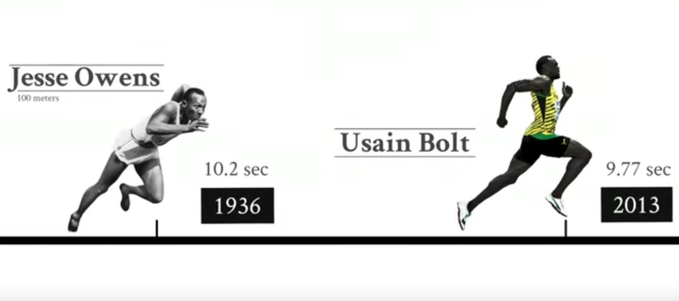
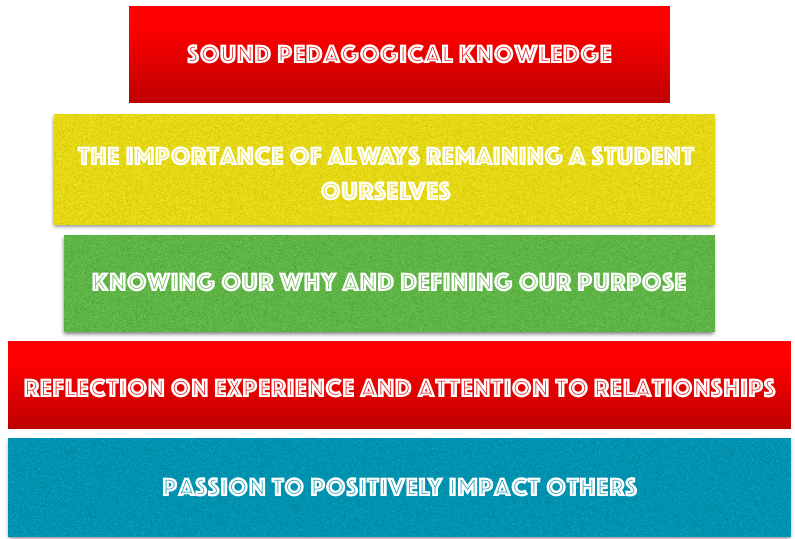
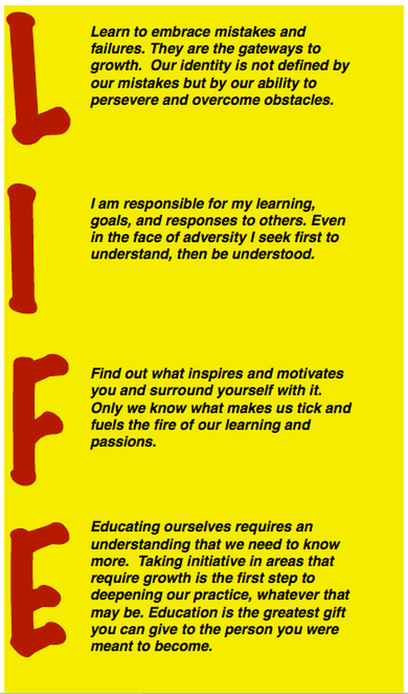
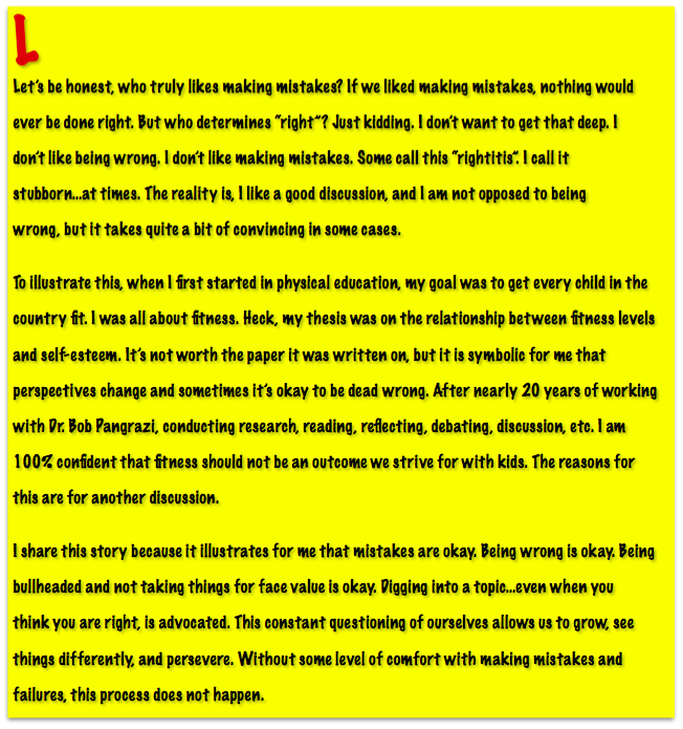
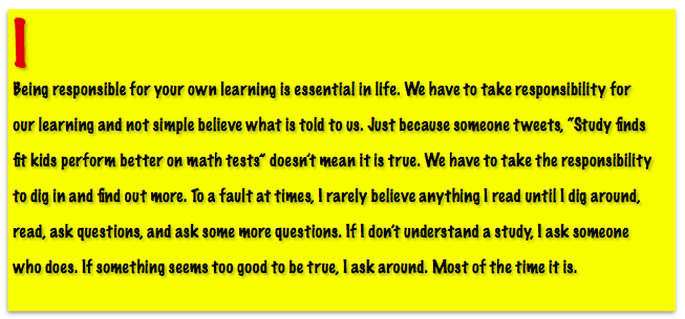
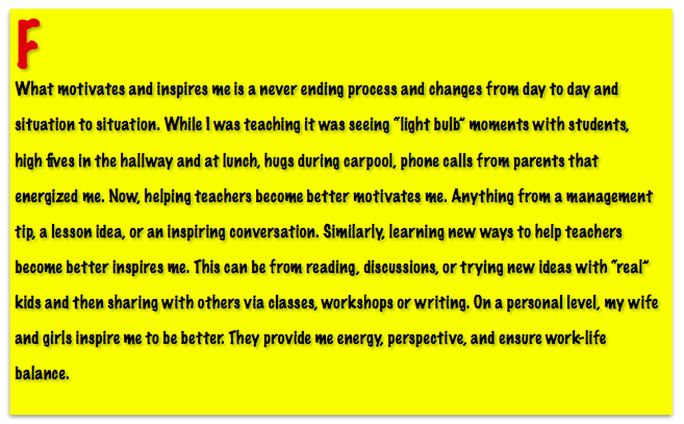
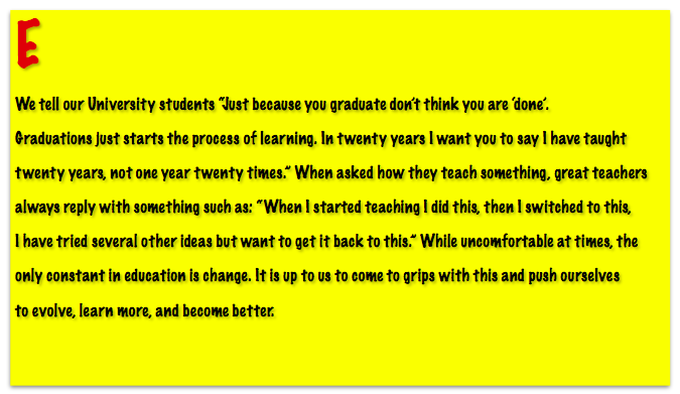
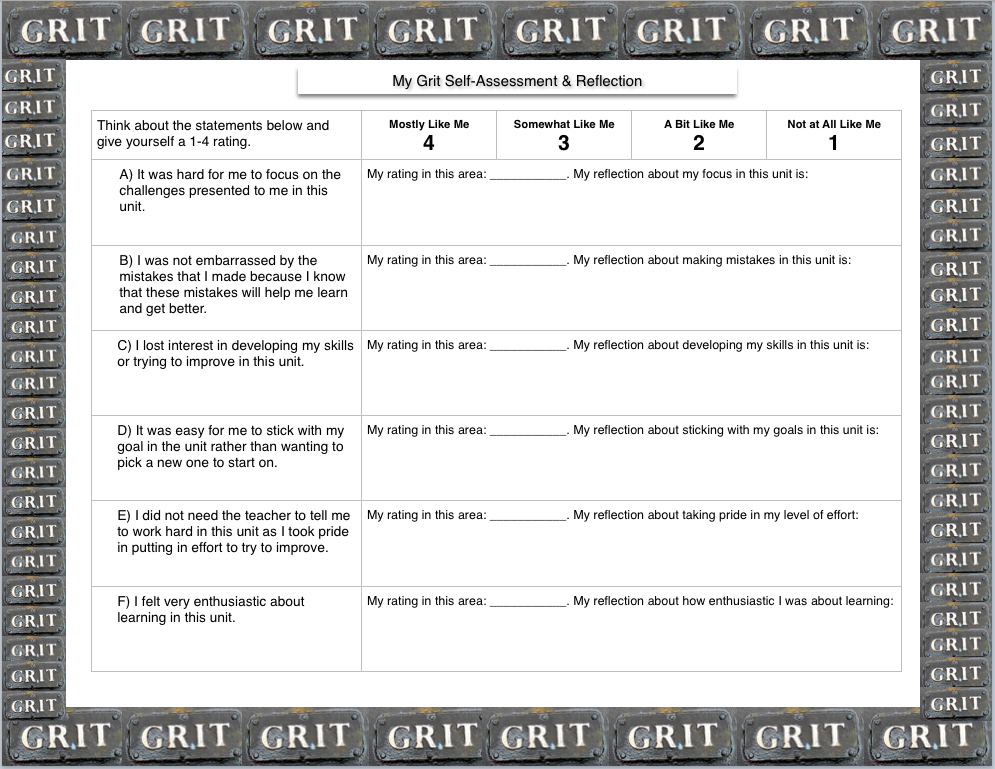
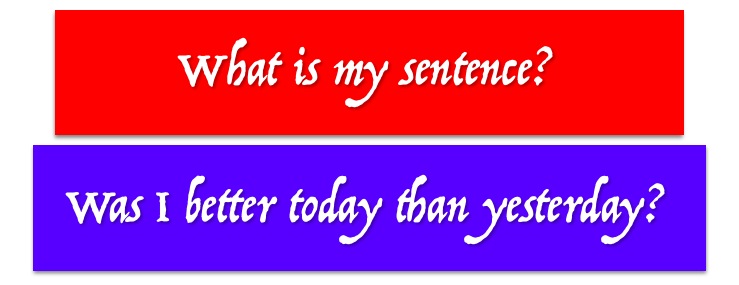




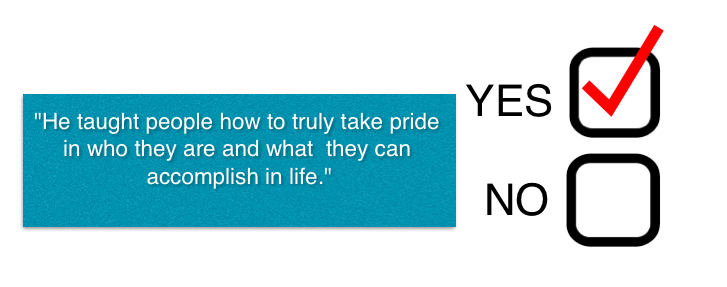
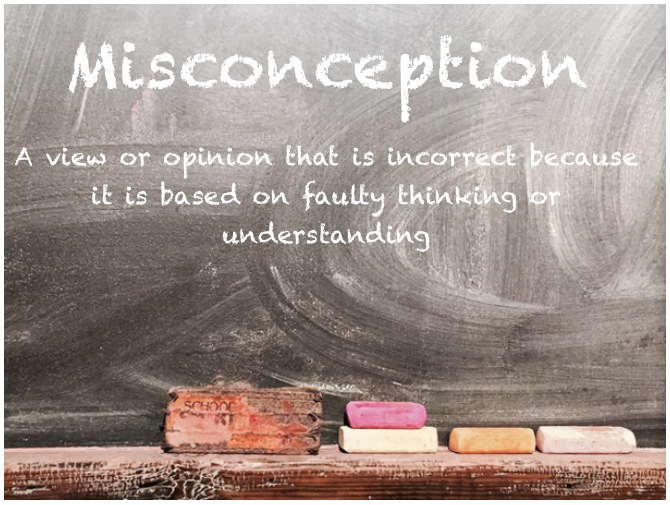
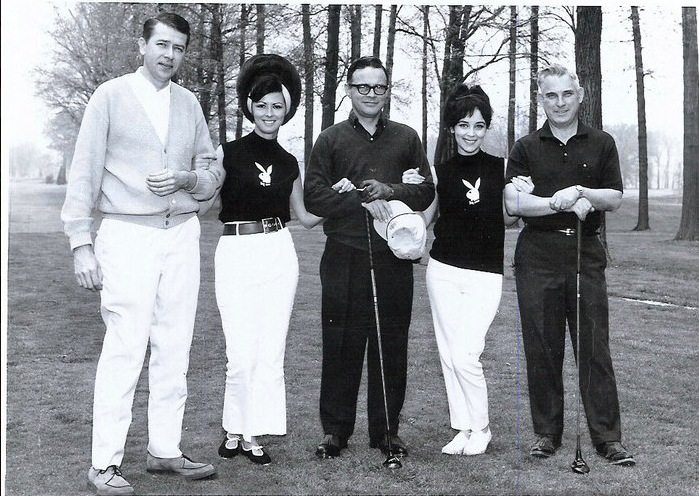
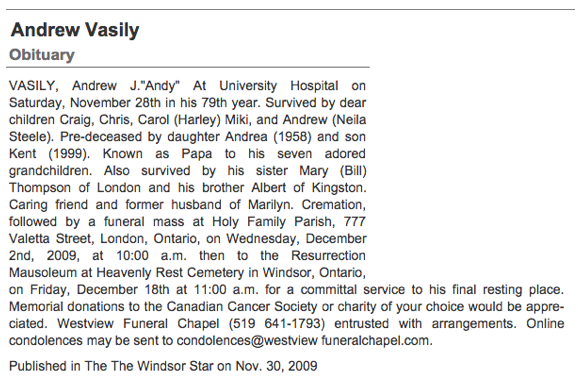

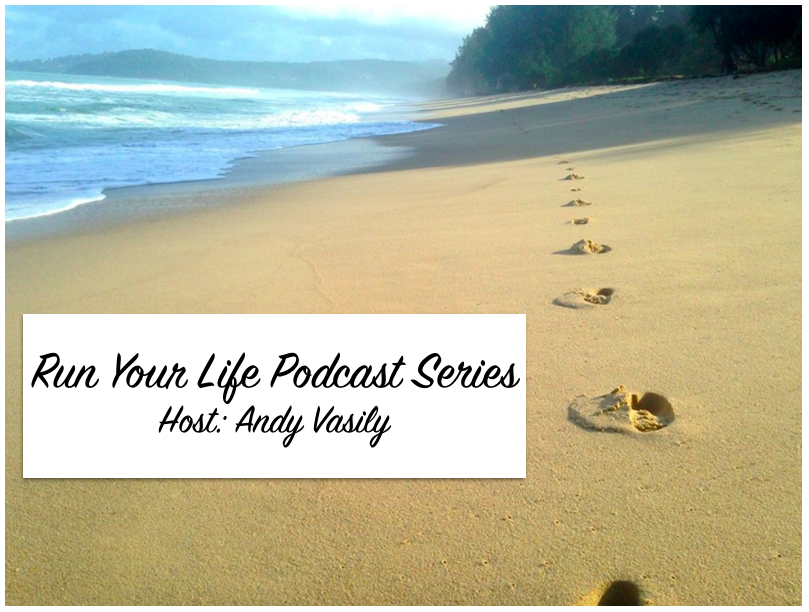
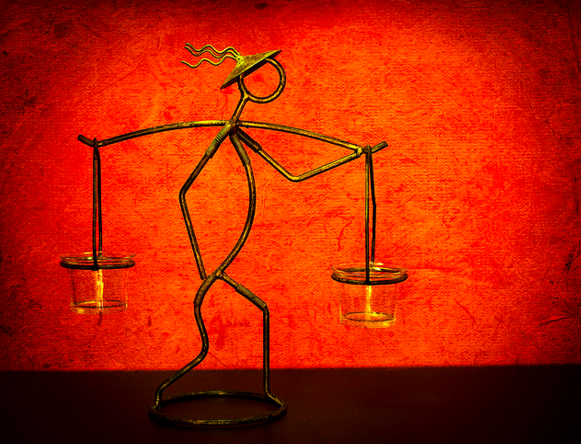




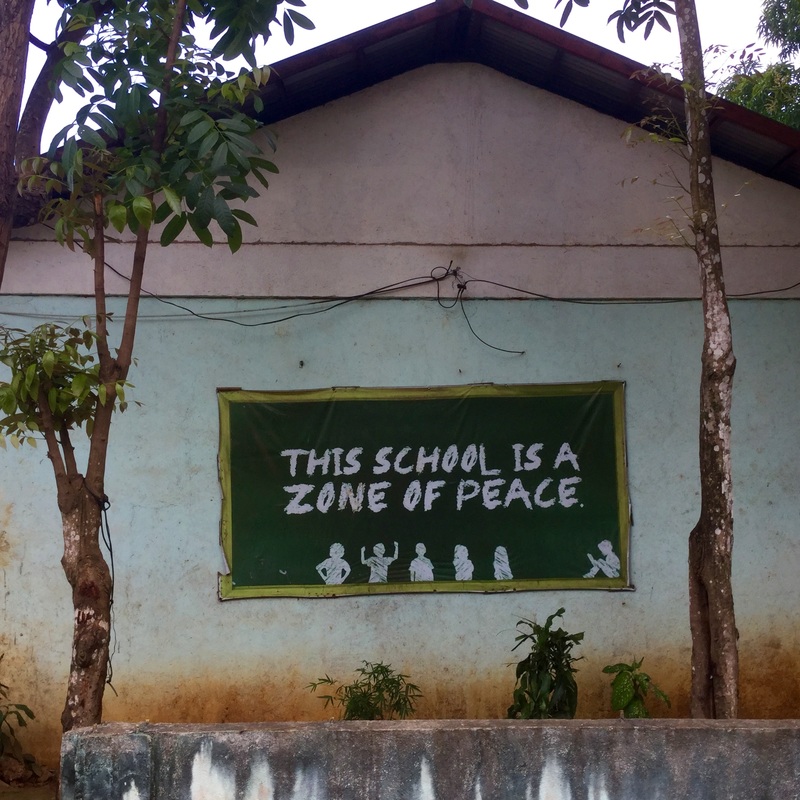
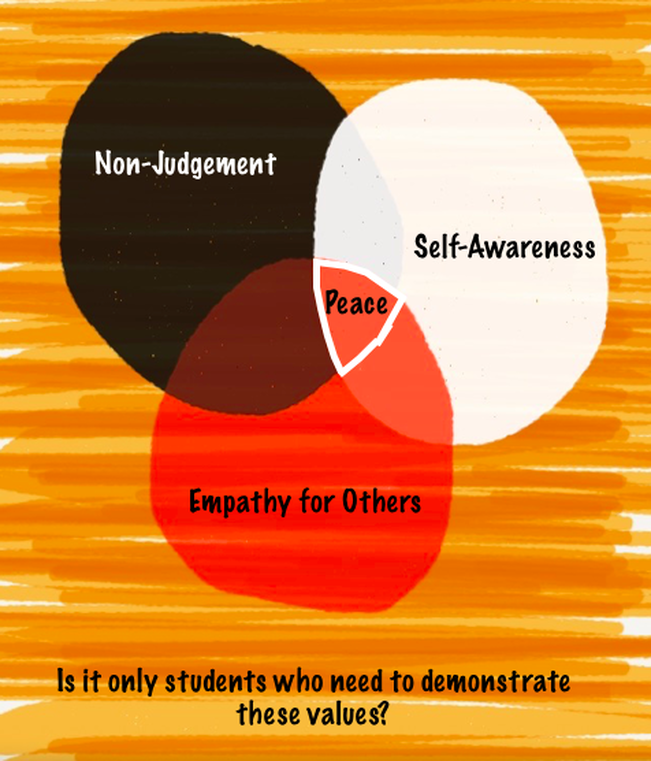
 RSS Feed
RSS Feed
